Retired Fire Chief, Wayne Baker, is a 26-year fire service veteran, serving the past ten years as Fire Chief and Emergency Management Coordinator for the city of Joshua, Texas. His career has been dedicated to civilian and responder safety through his leadership and education experience. Throughout his career, he has constantly sought out, evaluated, trained, and implemented advanced tactics and emerging technologies that save civilian and responders’ lives. As an educator, Wayne has developed over a dozen unique training programs and curriculums for first responders.
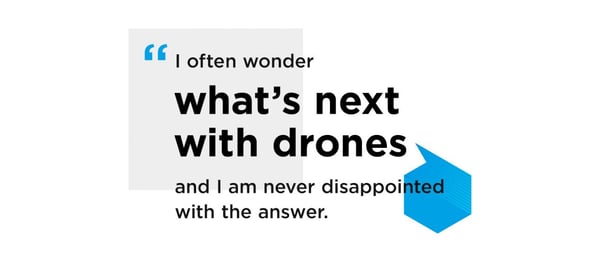
Wayne’s background in new technologies, education, and leadership has helped him to become a pioneer in the use of drones for emergency response. Over the past five years, he has personally operated as an FAA-certified remote pilot, deploying drones on countless fire and law enforcement incidents. Wayne Baker is also one of the founding members of the North Central Texas Public Safety UAS Response Team.
His experience in leadership and curriculum development has helped him become one of the lead developers of UAS training, deployment tactics, and program policies, enabling departments nationwide to utilize this technology to enhance public safety.
For the past five years, Wayne has also helped DJI lead the public safety drone market by evaluating new products such as the Matrice 200 series, Enterprise Mavic series, as well as the XT and XT2 sensors. Wayne has also worked with many DJI Partners through the Ambassador Program to help them promote Enterprise products.

What is your background, and what changes have you seen over your years in the fire service?
I have been involved in public safety since the age of 16, when I started as a Police Explorer in the Los Angeles area. While in college in Texas, I worked at several police agencies as a dispatcher while I volunteered as a firefighter. In addition to fire and police work, I also spent several years working on an ambulance as a paramedic. Over the past 26 years as a firefighter, I have seen us constantly focused on improving our safety, which has brought culture changes, protective clothing, and equipment improvements.
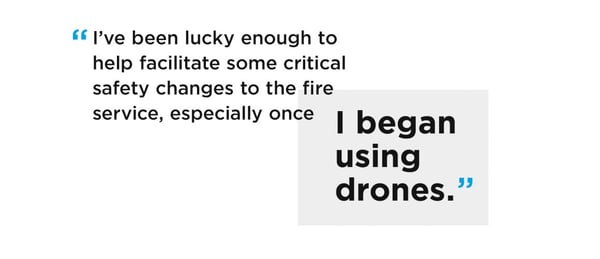
This has all been driven by increased scientific learning about fire behavior resulting in changes in tactics and operations. I’ve been lucky enough to help facilitate some critical safety changes to the fire service, especially once I began using drones.
Do you remember the first time you saw a drone, and how did you think it could help in your line of work?
The first time I saw a drone and knew I had to have one for emergency response was a YouTube video from a Phantom 2 taken right after a tornado caused damage in Arkansas. It was such a tactical game-changer because of the exponential increase in data that was able to be obtained instantly. I immediately told my city manager and council that we would be adopting this technology based on the potential uses, which was a very small list at the time that we have gone way beyond.
How has drone technology helped you and your department? What have been some of the big changes?
Drones have helped make our firefighters and police officers safer, more agile, and more efficient. All of this results in an ever-increasing ability to save the lives of the people we are sworn to protect. Some of the biggest changes have been in the use of thermal. We have had handheld thermal imaging cameras (our last great piece of new technology) since the mid-1990s, but they cost $15,000 to $25,000 and are nowhere near the image quality gained by an XT2. When combined with that different perspective gained from the aerial view, its information gathering is phenomenal. Thermal use by XT2 has reduced firefighter and police officer risks on incidents as well as made our ability to resolve an incident much more rapid, getting us available again for the next call for help.
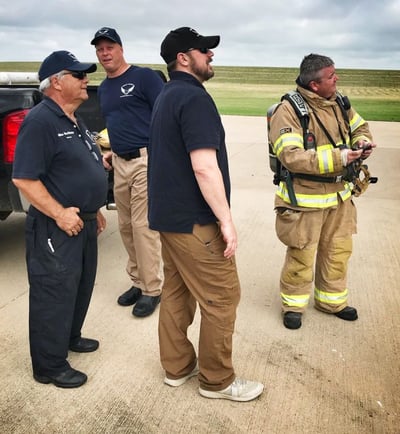
New technologies are not always well adapted and integrated into public safety. Why is that, and what has your experience been?
As I mentioned before, the culture of the fire service is one summed up in the phrase, “we have always done it this way.” It is sad to say, but three times new technology and training have caused massive retirements in the fire service: the change from horses to motor-driven fire engines (it was considered unmanly); computer reporting systems (inability of officers to type and learn the technology); and the move to adopt emergency medical services as a fire service mission. I have often pointed out that I achieved more change as a training officer than chief because firefighters and chief officers look to them, and are more receptive to what they have to say about new tactics and technology.
After a quarter-century in the fire service, you are now joining DJI, the leading UAV manufacturer in the world. What has inspired you to make this transition?
When looking at ending my career in public safety, one of the biggest anxieties I had was not being there to help my community in emergencies. The wonderful opportunity to join DJI helps me continue that mission, but now be able to expand to helping globally. I am excited by the opportunity to be able to help DJI bring new products to the market that can save lives in public safety response, improving the quality of life of everyone that will benefit from these new products.
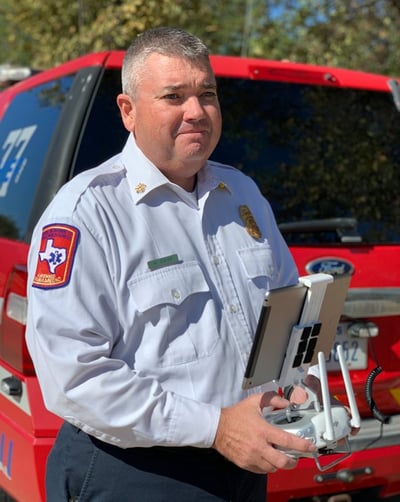
You will join Romeo Durscher’s Public Safety Integration team; what will your focus be?
It will take me a short while to get all up-to-speed, however, my previous experience in the fire service, integrating UAV solutions, deploying this new technology during small and large-scale events, and training operators across the U.S. will allow me to hit the ground running. Romeo has done an outstanding job over the past four-plus years working in this vertical. Together we will strategically focus on deeper UAV integration, easier adoption of the technology, better scale-up pathways, and more focused partnerships. There is so much potential in this technology, and we still have a lot of educating to do. This includes helping departments start programs, scaling up programs, and gathering valuable feedback, doing needs-assessments, and working with our R&D teams and the entire ecosystem to create even more beneficial solutions. Me joining the business development team is a great opportunity and is also a very important position. Strategic planning and execution, aligning the company’s needs as well as individual department needs, is one of the core functions of BD. Taking all of this and creating a strong network of partnerships is truly the essence of what we will be doing.
What do you expect the future of drones in public safety will be?
I often wonder what’s next with drones and I am never disappointed with the answer. I really foresee a move into emergency medical operations, autonomous response ahead of crews, enhanced situational awareness with AI advances, firefighting drones capable of extinguishing fires, and so much more. I can’t wait to see what we come out with next.
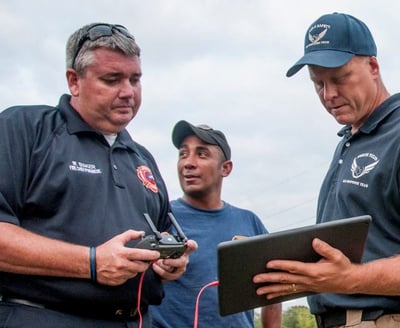
What is your favorite drone, and why?
While I love all of the DJI products, it is the Inspire 1 that is still my favorite. This is partly because it’s the one that changed it all for public safety, but also because of its incredible versatility with sensors, ability to carry and deliver small payloads, but above all, its absolute reliability. I call it a workhorse all the time.
What are you most excited about working at DJI and becoming a part of this team?
I am most excited about joining the winning team that is DJI. As the unquestioned industry leader, DJI has shown its ability to innovate in the effort to make lives better, and that passion is what I am so excited to become a part of.
There is a rumor going around that you are in a “Selfie-Competition.” Can you elaborate more on that?
Years ago, Romeo Durscher and I were at a conference helping with the Matrice 200 series launch. I have long been a “selfie-holic” on Facebook, mostly with dogs and puppies, and at this event, I began sneaking selfies with Romeo in the background. This battle has continued over the years at other conferences we have both been speakers at and has also evolved to who can create the most unique selfie. One of the great things about me joining DJI is that this competition will become so much better!

